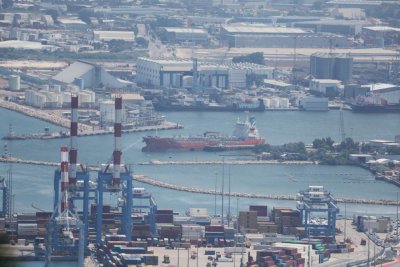Costa Rica, Israel sign trade pact for agriculture, industrial products

Israel and Costa Rica have signed a free trade agreement, but it must be ratified by Costa Rica’s Legislative Assembly in the face of opposition by pro-Palestinian groups. File Photo by Abir Sultan/EPA
Dec. 12 (UPI) — Costa Rica and Israel finalized a free trade agreement this week that eliminates more than 90% of tariffs between the two countries, mainly on agricultural and industrial products. The deal also is expected to improve prospects for trade in services, technology and specialized investment.
Costa Rica’s Ministry of Foreign Trade said the pact with Israel — which it described as a leader in innovation, cybersecurity, clean technologies, agrotechnology, digital services and semiconductors — creates a favorable framework for expanding trade, attracting capital and strengthening bilateral production chains.
The agreement must be ratified by Costa Rica’s Legislative Assembly, a process expected to be contentious due to criticism from pro-Palestinian groups calling for a freeze on ties with Israel.
Activist groups collected about 12,000 signatures from Costa Ricans and delivered them to the government in November, urging it to halt the agreement on the grounds that Costa Rica would become “complicit” in genocide, local outlet Semanario Universidad reported.
Although current trade between the two countries — estimated at about $60 million — represents only a small share of each nation’s total exports, Costa Rican business groups welcomed the agreement, saying it will allow the country to strengthen specific niches where it has a competitive advantage or needs key inputs.
“In the current context, it is very important to diversify the sources of investment and the destinations of our products, particularly in a high-potential market such as the Middle East,” Ronald Lachner, president of the Association of Free Zone Companies of Costa Rica, told El Observador.
Costa Rican Foreign Trade Minister Manuel Tovar said the agreement “represents a strategic opportunity to position Costa Rica as a competitive supplier in high-technology sectors, quality agribusiness and specialized services.”
Israeli Economy and Industry Minister Nir Barkat said Costa Rica is “a natural trading partner for Israel — an advanced OECD country with a deep commitment to free and open trade.”
“The free trade agreement is expected to strengthen the growth trend in Israeli exports, deepen business cooperation and help reduce the cost of living in Israel by lowering import prices,” he said. “The agreement reflects the policy we are pursuing: opening new markets, diversifying trade destinations and strengthening the engines of growth of the Israeli economy.”
With the agreement’s entry into force, Costa Rican exports are expected to reach between $50 million and $60 million in 2026, driven by products such as green coffee, pineapple, honey, kosher and halal meat, medical devices, advanced manufacturing and digital services.
Beyond the exchange of goods, the free trade agreement aligns with Costa Rica’s national strategy to attract investment in high-technology sectors. Israeli investment in Costa Rica has shown a sharp increase, rising from $1 million in 2023 to nearly $20 million in 2024.
The scope of the agreement goes beyond tariff reductions. It includes plans to open a Trade and Innovation Office in Jerusalem in early 2026. The office is intended to facilitate joint projects in semiconductors, medical technologies, advanced agriculture and specialized tourism.
Israel’s ambassador to Costa Rica, Michal Gur-Aryeh, said the two economies are complementary.
“Israeli technology will contribute to Costa Rican productivity, making it more profitable and competitive, while Israel will gain access to Costa Rica’s wide range of products,” she said.
